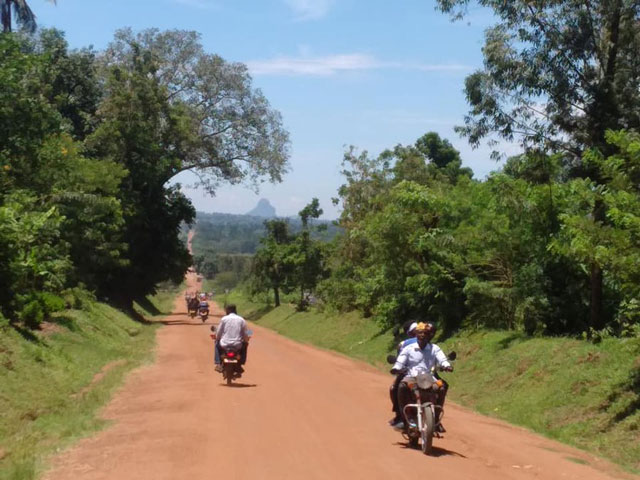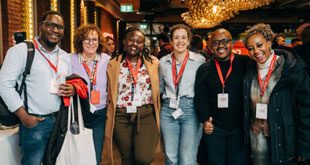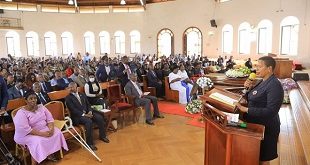
In small corners, in small ways, we can build back our environment to secure it for our futures and the beautiful beasts with whom we share this fair Earth. We don’t need to speak it. Or if we do, do so gently.
Tororo, Uganda | Charles Onyango-Obbo – BIRD AGENCY | My ancestral home is in Tororo County, eastern Uganda. Tororo, its main town, is famous for its misty rock.
Many years ago, our parents retired to the countryside, a few kilometres outside the town. The family would gather with them at the end of every year for the Christmas holiday.
It was 2007, and they both had been diagnosed with cancer, so we had the celebrations under a cloud. The vestiges of time had not yet piled up around my waist, so I went for a long contemplative run. I decided to jog along a disused railway line about five kilometres out.
The railway line used to cut through a forest. We have vivid memories of the forest. When we were kids and visited with the grandparents during the school holiday, the highlight would be going out to the woods to follow one of our uncles. He had a hunting gun licence. He would bring his gun with him for the holidays and hunt for guinea fowl. Then, we thought it was cool. The bang. The smell of gunpowder. Chasing down the birds he had shot. Now, we know better.
The fact that the forest was no longer there at all slowed me. I decided to walk instead and take in the environment. Where there was once was forest, there were now gardens. In some places, there was nothing at all. I remembered that there used to be many guava and tamarind trees along the way. They were all gone.
The family has a few acres of land. I resolved to do a rewilding experiment on a tiny corner: to grow back the shrubs, flowers, and trees and try to lure some butterflies and other wildlife back. If it succeeded, then I would scale it up. The area can sometimes be hot at year’s end, especially for people used to living in temperate climates. I, therefore, decided to create a small walkway with a tree canopy and rewild around it. The canopy, if it took, would be a permanent cool sanctuary from the heat.
The new trees would be planted to link up with the existing ones, and space would be made to plant shrubs and flowers. We undertook a big pruning exercise to create that space and bring direct sunlight through existing trees. We pruned even unloved ones like thorn trees. The village thought I had run mad. The pruning went on for over a week. I left my hired hands to continue the work and returned to Nairobi, Kenya, where I was based. I returned about three months later.
It was a wonderful sight.
New trees and shrubs had been planted everywhere. The most striking view was a high pile of wood outside a store in the homestead. I was uneasy and teased my father that he had illegally logged someone’s forest. That is when he realised I hadn’t figured out its source and told me, “All that wood came from the branches that were pruned.” It was enough to last for years.
The most telling comment about my experiment came from one of the local leaders who told me the people in the village thought I was a bad and selfish man. I asked why.
He said it was because I knew they could prune their trees instead of cutting them and still get enough fuel for wood. (This is the main source of energy for cooking for more than 60% of households in sub-Saharan Africa.) I had, he said, watched them all but crash the local environment and had done nothing.
I told him I didn’t know better. I had stumbled on this solution by accident; when we were pruning, it didn’t for a second occur to me that the branches would add to a big pile of firewood.
Many people in government could be blamed for the failure, but I chose to focus on the teachable moment. It was a lesson about how to talk to everyday people about the small things they can do and contribute to saving Mother Nature. Telling these folks to plant trees because, if we have many of them, they can help suck carbon dioxide from the air and cool our planet would have been a waste of time. Doing the small things they can see and learn from gets their attention.
One of my favourite corners in my Tororo hometown. One day most of this town at the Rock will look like this🤪😘 pic.twitter.com/wmsdJitXWx
— Charles Onyango-Obbo (@cobbo3) November 14, 2022
Two friends in different corners of Uganda wrestled with the matter in a not-dissimilar way. One is from the mountainous Sebei region, which has produced a new generation of world-beating Ugandan marathoners like Jacob Kiplimo and Stephen Kiprotich. He bought seedlings and went around the villages near his home, mainly encouraging women to plant trees.
He would go to the wells where they were drawing water and bribe them with small packets of biscuits and sweet words to come to the tree-planting meetings at his home. They came, but the exercise was a flop. It turned out that ownership rights were a problem. The women planted the trees, but on land owned by their husbands. The cows and goats, owned mainly by the men, would eat the sprouting trees, and the women could do nothing. The power balance and incentives didn’t favour trees.
He has very many trees, so he contrived a trick. He did a cull and sold the trees to timber traders and schools that needed them for fuelwood but didn’t collect the money immediately. He organised a meeting of the women he had recruited to grow trees and asked the various people he had sold the culled trees to come and collect them on the same day – and bring his money in cash. On the day, several trucks came to collect the wood, and he would pause the meeting and collect a bag of money.
He threw a party for the women. Several small sacks were full of money on his veranda when they left. It was the largest mound of cash the women had ever seen. They all asked him the same question: “You mean you can make this much money growing and selling trees.”
He didn’t need to answer – and didn’t have to call another tree-planting meeting or distribute free seedlings again. The women found their seedlings and now have more trees than he thought they would ever grow. He didn’t speak. His actions – and money – did all the talking.
Further out, near the capital Kampala, in the district of Mukono, another friend took a nobler road. He and his wife bought a large piece of land in an area that was once forested but had been denuded and was almost barren.
They spent years patiently reforesting and even fencing it. On Google Earth today, you can see their forest. It’s a dense green patch in a sea of light green.
They got a botanist who photographed and catalogued every tree. When they were done with that, they got zoologists to do the same with the wildlife, including snakes and did a census. They are a bit crazy like that.
I am a sucker for interesting trees. Saw this in a nursery in Lira. John, the guy runs the place, said it is teak. Snapped up all the few seedlings he had. We will see what happens when they get to Japland. Will report back in a year. pic.twitter.com/VOr4gYNE2A
— Charles Onyango-Obbo (@cobbo3) June 1, 2022
They learned the trees’ names in the local Luganda language, in English, and their technical names. They decided a little of that would help do what they wanted – tell the story of the trees, why they mattered, and why people should care enough to reforest. What followed next was the true genus. They figured that in centuries gone by, the people related to these trees more intimately: for medicine, possibly food, animal feed, or shelter.
They commissioned research into this historical usage. Virtually all the trees now have their names in Luganda and English, plus a story of what they meant in the communities’ lives in the past. The latter is the story will tell.
Back in Tororo, the little rewilding project has come of age. On a good day, several butterflies flap their wings about. There is a thick tree canopy now. It is very cool all year round. With grass walkways in the middle, it retains water for a longer time during the rains after other areas outside have dried. It also captures some nutrients from the run-off.
With the shade and rich soils, the canopy has been invaded by pigs. They have almost entirely dug up the neat grass walkaways, searching for worms and other edibles underneath and lying contented and unapologetic in the shade after lunch. It’s heartbreaking and costly, and the pigs have upended years of hard work.
However, a small light bulb also came on. The lesson has yet to be lost on the villagers either. In small corners, in small ways, we can build back our environment to secure it for our futures and the beautiful beasts with whom we share this fair Earth. We don’t need to speak it. Or if we speak, do so gently. We gain a lot more by just doing our little bit.
*****
SOURCE: bird story agency
******
RELATED STORY
History of Uganda told by its trees and flowers https://t.co/2QDreej9rP @cobbo3 #MonitorUpdates
— Daily Monitor (@DailyMonitor) November 16, 2022
 The Independent Uganda: You get the Truth we Pay the Price
The Independent Uganda: You get the Truth we Pay the Price


